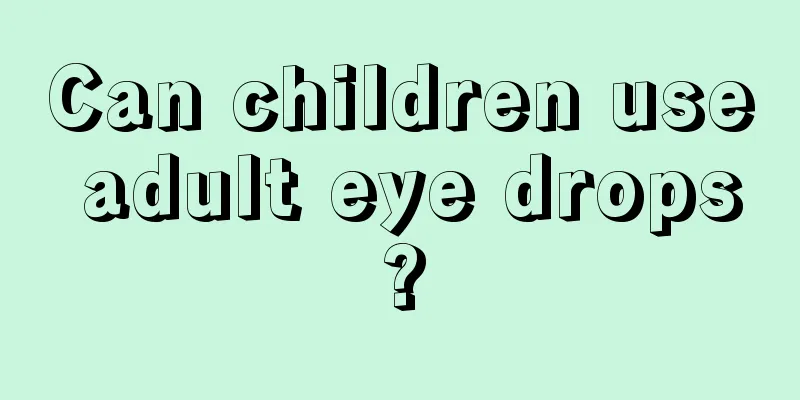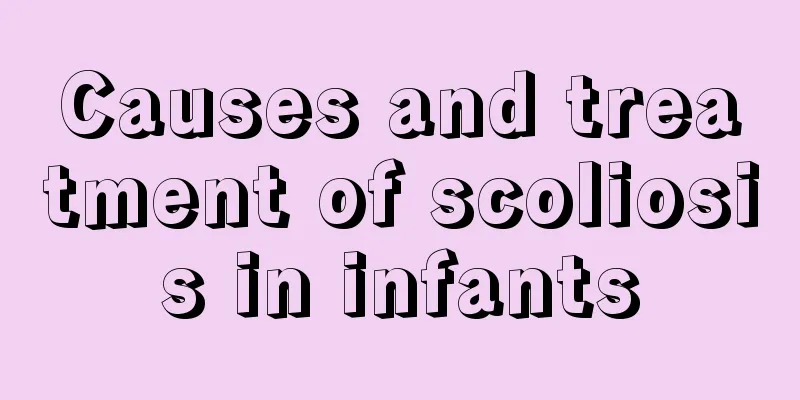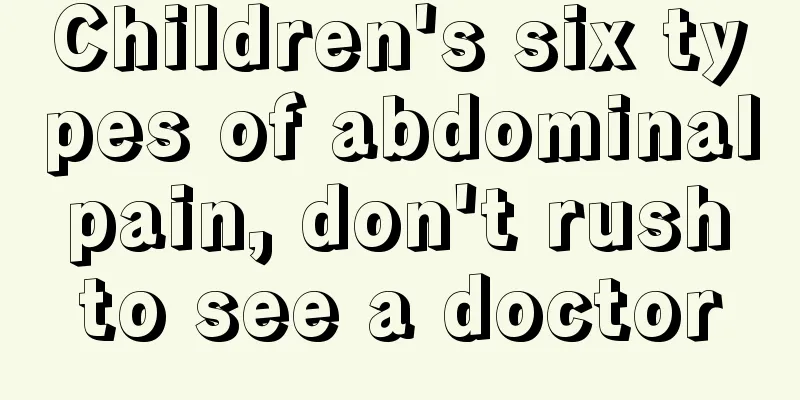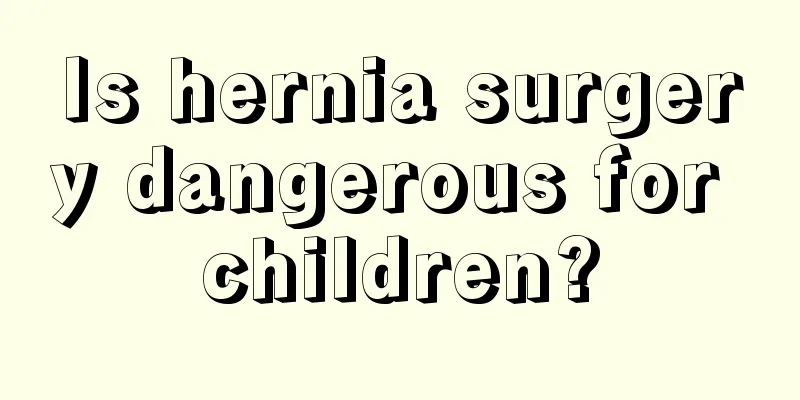Can children use adult eye drops?

|
Generally speaking, medicines are universal, which means that a medicine can be taken by both male and female patients, adults and the elderly for any disease. But children are the only exception, because the medicinal properties of adult drugs are relatively strong, and children's bodies are relatively fragile and cannot withstand too strong medicinal properties, so many drugs have children's versions. So can children use adult eye drops? Although the use of pediatric ophthalmic medications is not as strict as systemic medications, if the dosage is too large (such as using atropine eye drops), the frequency of use is too large, or the medication method is improper, it will not only fail to cure the eye disease, but will aggravate the condition and even delay treatment, leading to decreased vision or blindness. What should we pay attention to when using eye drops for children? (1) Pay attention to the concentration and dosage of the drug. At present, the vast majority of eye drops used in my country are prepared by the pharmaceutical departments of major hospitals themselves or by agreed prescriptions. In addition, most hospitals lack eye drops specifically for children, and the drug concentration and dosage are roughly the same as those for adults. Therefore, when children use eye drops, it is important to control the frequency and amount of drops to prevent side effects caused by excessive absorption. Generally, eye drops have several concentrations for you to choose from, such as 1%, 2%, and 3% atropine eye ointment, 0.25%, and 0.5% timolol eye drops, etc. When using eye drops for children, different concentrations of eye drops should be selected according to their age. Generally, low-concentration eye drops are chosen for children under 10 years old, while those over 10 years old can use basically the same medication as adults. In addition, the amount and frequency of drops should also be controlled. The conjunctival sac of children under 10 years old is smaller than that of adults. When using eye drops of the same concentration as adults, 1 drop each time is enough. The frequency of drops should not be too frequent, 3 to 4 times a day is enough. (2) Pay attention to the method and time of medication. Eye drops for children are different from those for adults. Children’s crying and non-cooperation often make them ineffective. Therefore, extra attention should be paid to the method and time of medication. Otherwise, not only will the eye disease not be cured, but the disease may also be delayed. For children who can cooperate, we should first do a good job of ideological work before dripping the medicine, and explain clearly why eye drops are needed. Some eye drops are slightly irritating after being dropped into the conjunctival sac (such as 0.25% zinc sulfate eye drops). The child should be informed first to be mentally prepared, eliminate the child's fear, and obtain his (her) cooperation. Attention should also be paid to the method of dripping medicine. For uncooperative children, dripping medicine in a conscious state is often difficult to succeed. When crying, the medicine cannot work due to the dilution of tears. Therefore, the time for eye drops should be chosen during sleep or before getting up in the morning. As long as the method of dropping eye drops is correct, it will not easily wake the child up, and the eye drops can remain in the conjunctival sac for a relatively long time, which is beneficial to the absorption of the eye drops and fully exerts the therapeutic effect of the drugs. (3) Pay attention to the side effects caused by drug absorption. Some eye drops can achieve good therapeutic effects when applied topically, but excessive absorption will cause some systemic toxic side effects to the child. For example, atropine eye drops are widely used in pediatric mydriasis optometry and iritis. However, if absorbed too quickly or in excessive amounts, the child may experience dry mouth, facial flushing (caused by vasodilation), and other reactions. Therefore, when children use this type of eye drops, after the medicine enters the conjunctival sac, use the index finger to gently press the lacrimal sac area (next to the bridge of the nose) to reduce the absorption of the medicine into the lacrimal sac through the lacrimal puncta and reduce the toxic and side effects caused by the absorption of the medicine. Red eyes can be caused by many diseases, such as conjunctivitis, keratitis, iritis and other eye diseases, but conjunctivitis is more common. However, I still recommend going to an ophthalmology hospital for further examination and symptomatic treatment. |
<<: Symptoms of myocarditis in babies
>>: Why does my seven-month-old baby have swollen eyes?
Recommend
Early symptoms of intestinal necrosis in children
When children fall ill, adults are always very wo...
What should I do if my baby is born with short legs due to heredity?
Newborn babies are of different heights and weigh...
What are the anti-allergy drugs for children?
Children's immunity is relatively low, so if ...
White acne on newborn
Because newborns have low immunity, they are easi...
What should I do if my child's throat is a little red?
Children's immunity is very low, and because ...
What is the reason for positive occult blood in children's stool?
When children are very young, they have no contro...
Can children eat tiger tail wheel?
The tiger wheel is a plant that is now also used ...
What to do if your baby burps after feeding
In daily life, many young mothers will temporaril...
Pertussis toxin
When babies are young, they have a high chance of...
How to supplement zinc deficiency in a 3-year-old baby?
When babies reach the age of three, they can basi...
Is it normal for newborns to be sleepy?
The normal sleep time for a newborn is 20 hours a...
Baby care tips for new mothers
Whenever a new life comes, what follows is not on...
Why does a newborn baby have diarrhea?
Nowadays, every child is the treasure of the fami...
Children's mouth herpes
Herpes is a skin disease that can grow on every s...
Steps of root canal treatment of primary teeth
I believe that everyone is not too familiar with ...









